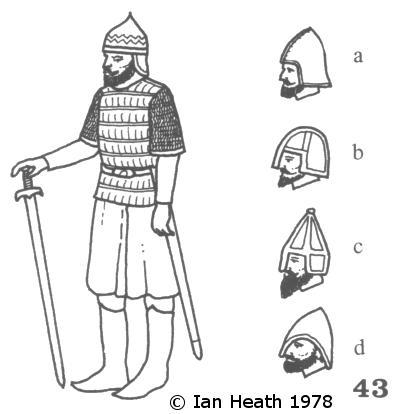SYRIAN CAVALRYMAN c. 1220An extract from Armies and Enemies of the Crusades 1096-1291by Ian Heath  [Based on a Syriac Gospel, BL Ms. Additional 7170] [43a Vie de saint Louis (Life of St. Louis) by Jean de Joinville] [Helmets similar to b & c in Assault on Tyre, Histoire d'Outremer by William of Tyre. Brit. Lib. Ms. Yates Thompson 12, 1232-1261] |
